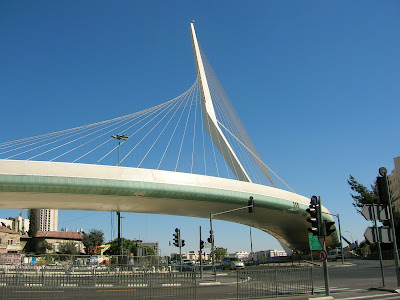
It's not every day you see this in suspension over your head while you buy your day ticket for a museum. I was blown away.

His name is Cai Guo-Qiang and he is very much a man of the moment. He focuses on present day sociopolitical issues, more notably terrorism since the events of 9/11. This piece is part of his Inopportune: Stage One, which follows the growth of an explosion over the course of nine American-made cars.

In the Guggenheim, it begins with the first car (unscathed) resting on the top floor of the museum. The remaining cars begin their fall through the central atrium of the Frank Lloyd Wright rotunda.

The cars as a whole represent a stop-motion pattern projecting the trajectory of one exploding car. Electric light rods in varying and progressing colors help us see the development of the explosion as if it was happening in one fluid motion. I couldn't stop looking at the colors of the bursts from each car, it was so inviting.

Obviously, the first emotion that comes to you when you see this is that of awe. Then it takes a more sinister turn. Like looking at a nuclear explosion, its an awesome sight and you tend to forget that you're enjoying a destructive act.

All pictures besides the one at the top are of the same exhibition but in a different location; MASS MoCA. Due to the available space at that museum, the cars were modified to be viewed horizontally. The lucky visitors were allowed to walk along and underneath the cars. I think this would of been a better way to see this in all its glory when you consider how restricted you are at viewing this at the Guggenheim.

The final car, which has finally reached the ground floor of the Guggenheim, rests unscathed as if the whole event had never occurred.

In a similar strand of creating art out of destruction, Cai went on to exploding gunpowder and photographing the end results.
I can't say enough how much I love his work. I've only brought you a sample of his work so search him on the internet and enjoy, you won't be disappointed.













































